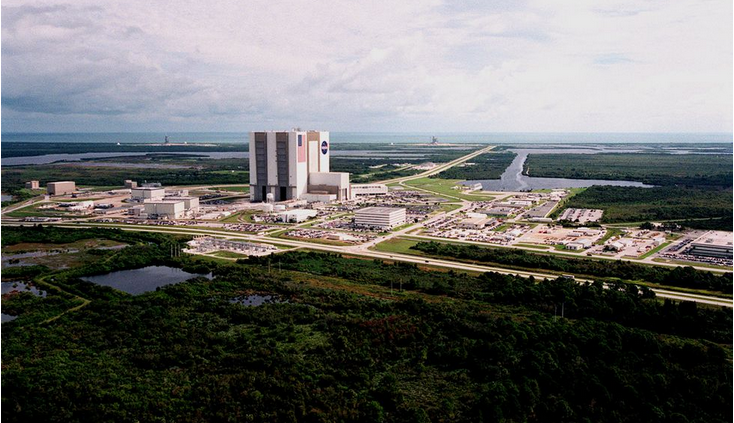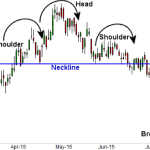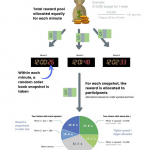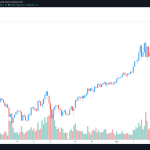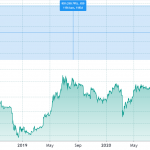The place where Apollo 11 left the Earth is open for a new chapter in human spaceflight.
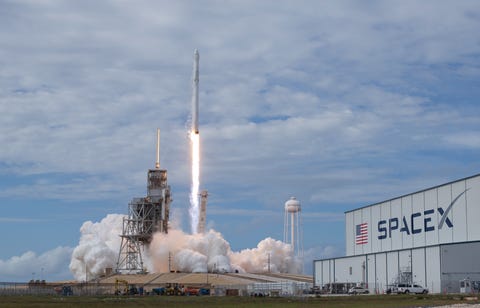
There may be no more enduring image of American spaceflight than a heroic astronaut boarding a U.S. spacecraft. Images from the Apollo era of spacesuit-clad flyboys striding down sterile hallways have become iconic—and, in the hands of Hollywood, even mythological. Now this scene is on the verge of happening again.
Today, workers began final installation on a crew access arm to the Fixed Service Structure at Launch Complex 39A, a crucial milestone in the nation’s effort to resume American-based human spaceflight. This bridge is the last place NASA astronauts will see before going into the SpaceX capsule that will blast them into space, starting next year.
The astronaut bridge will hang 200 feet above ground and be kept in near-clean-room conditions. That’s 70 feet higher than where the former Space Shuttle access arm stood. This is one of many modifications SpaceX has made since renting the launchpad; the company also removed more than 500,000 pounds of steel from the pad’s structure.
The Launchpad of Legend
When SpaceX launches astronauts from 39A, it will be the first to do so from U.S. soil since the Space Shuttle retired in 2011. Bob Behnken and Doug Hurley will be the first two NASA astronauts to fly in the Crew Dragon spacecraft, on the schedule for April 2019. After this orbital test, NASA’s Victor Glover and Mike Hopkins will take the ride to the International Space Station for a long-duration mission.
Launch Complex 39A will be a fitting setting for these launches, because the Kennedy Space Center site has been the focal point of American human spaceflight since the moonshots of Apollo. The launchpad’s history reflects the highs and lows of the U.S. space program, and its rebirth heralds a promising but very new future.
In 1967, NASA built the pad for heavy launches. The Apollo moonshot program depended on massive Saturn V rockets that rose under 7.5 million pounds of thrust. The Apollo 11 mission that landed Armstrong and Aldrin on the moon launched from 39A. So did Apollo 13, for you movie fans.
The pad witnessed the rise and fall of another spaceflight program, the Space Shuttle, which started with Columbia in 1981 and ended with Atlantis in 2011. Dozens of missions left from the pad during the shuttle era, an impressive stat but far below what the spacecraft’s designers had promised.
The end of the shuttle led to six years of dormancy at 39A, during with time the U.S. has relied on hiring Russia to ferry its astronauts to the International Space Station. But while cooperation with a longtime enemy in Russia began as a happy swords-to-plowshares story, it became a political liability as U.S. relations with Russia soured. There became a national imperative to launch Americans on American spacecraft, and SpaceX, along with Boeing and its Starliner capsule, picked up the project.
The New Rules of Spaceflight
There is more at stake here than national pride. This is a new era for human spaceflight, a total rewriting of rules. It’s a process the U.S. government began under George W. Bush, continued through the Obama administration, and which is coming to fruition under Donald Trump. The idea is to have aerospace companies make their own launch vehicles and spacecraft, use them for NASA missions and allow them to sell rides to anyone else who can afford them. This took the design work from NASA and freed companies to pursue their own designs and improvements.
As a result, Kennedy Space Center had to learn how to become a spaceport landlord. The first launchpad it rented was 39A, which became a battle of billionaires as Elon Musk’s SpaceX and Jeff Bezos’s Blue Origin bid for the launchpad. Musk prevailed and scored a 20-year lease.
“That was a big milestone,” Scott Colloredo, director of the Center Planning and Development Directorate at KSC, once told PopMech. “Not only did we convince ourselves we didn’t need the pad, but we let a commercial company take it over.”
Kennedy Space Center has transformed, and it hopes to grab a large piece of commercial space business. Besides SpaceX, Blue Origin, the United Launch Alliance, and Boeing are anchor tenants that have resurrected the spaceport (even before some of them launched anything from the cape). But the vision of human beings riding in private rockets raises the stakes. Plans of privately funded interplanetary colonization and corporate deep space industrialization are crammed in the binders of engineers and venture capitalists.
The most ambitious private spaceflight industry dreams start here at 39A, the site of the biggest government successes of the Space Age. If SpaceX becomes the first private space to safely deliver astronauts to orbit, a new era may have truly begun.
Now the years of investment, political buffeting, funding fights, and experimental engineering are about to come to a conclusion at 39A. It looks like the end of the beginning of commercial spaceflight, and so it remains to be seen if the reality of this new approach will live up to the promise.

